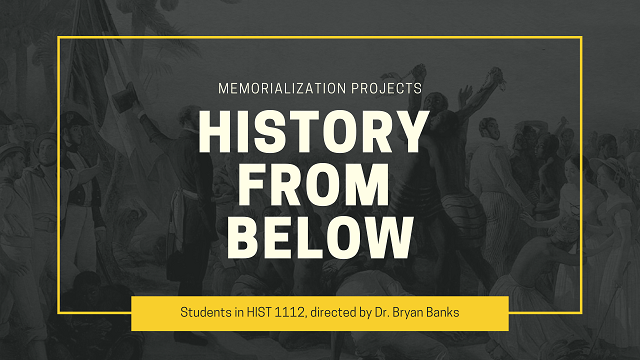
History from Below: Memorialization Projects
Title
Files
Download Full Text (310 KB)
Description
Our memorial is called “The Black House”, and it has many rooms that symbolize the hardships of enslaved Africans who endured the Transatlantic Slave Trade. Savannah was the perfect place to place a memorial due to the incredibly high amount of people that were sold on auction there. Every year on March 2nd and 3rd, Savannah observes a “Weeping Time” to mourn for the 429 that were sold in 1859, making it the largest amount of people sold in one day. First, you enter through the back door into the kitchen which shows how enslaved women predominantly worked inside. Here, they took on roles such as cooks, cleaners, servants, and also were in charge of looking after the children. From there you move to the kid’s room, which hints at shocking details about the amount of enslaved children that were torn from their families. In the basement, you’ll find holding pens and chains used for holding enslaved Africans on their voyage across the Atlantic Ocean. They were imported by the United States from major contributors like Brazil, who alone was responsible for 40% of all slave trade. You exit the basement into a warm, inviting, and colorful living room that shows how life was for Africans before the slave trade began.
Publication Date
2019
City
Columbus, Georgia
Keywords
Slaves, Africa, Transatlantic Slave Trade
Disciplines
History
Recommended Citation
Smith, Jada; Allen-Sheppard, LaChantel; Hill, Daniel; and Daut, Nick, "Black House" (2019). History from Below: Memorialization Projects. 10.
https://csuepress.columbusstate.edu/historyfrombelow/10


